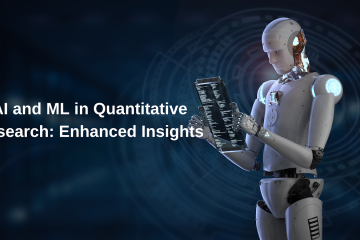A brief overview that you must know about: What is cybersecurity?
Cybersecurity revolves around safeguarding computers, networks, and data from digital threats. It involves implementing layers of defence across varaious aspects, including technology, processes, and people. These elements work together in organisations to create a robust defence against cyber attacks. Tools like unified threat management systems automate security tasks and enhance detection, investigation, and remediation processes.
In today’s hyperconnected digital landscape, cybersecurity’s importance cannot be overstated. As cyber threats continue to evolve and increase, organisations and individuals alike must prioritise the protection of their digital assets. One effective way to enhance cybersecurity preparedness is by enrolling in a Cyber Security Course Online. These courses offer comprehensive training and education on the latest cyber defence strategies, equipping participants with the knowledge and skills to safeguard against cyber attacks.
Users play a crucial role by adhering to data security principles such as using strong passwords and being cautious with email attachments. Organisations need structured processes to handle cyber attacks effectively, relying on frameworks like the NIST cybersecurity framework for guidance. Technology tools like firewalls, malware protection, and email security solutions are vital for protecting endpoint devices, networks, and cloud infrastructure.
Why is cybersecurity very crucial in today’s digital world?
In today’s digitally interconnected world, cybersecurity’s significance cannot be overstated. It is a fundamental pillar of modern society, safeguarding individuals, organisations, and critical infrastructure from many cyber threats. Cybersecurity encompasses a comprehensive approach to protecting systems, networks, and data from unauthorised access, manipulation, and exploitation.
On an individual level, cybersecurity plays a crucial role in safeguarding personal information and assets. Cyber attacks can have devastating consequences, ranging from identity theft to financial fraud and the loss of sensitive data such as family photos or personal documents. By implementing robust cybersecurity measures, individuals can mitigate these risks and protect themselves against online threats.
Beyond the individual level, cybersecurity is essential for functioning critical infrastructure and key industries. Power plants, hospitals, financial institutions, and other vital sectors rely heavily on secure digital systems to maintain operations and deliver essential services to the public. Any disruption or compromise in these systems could have far-reaching consequences, affecting public safety, economic stability, and national security.
Moreover, cybersecurity’s importance extends to the broader digital ecosystem. Cyberthreat researchers, such as the dedicated team at Talos, play a crucial role in identifying and mitigating emerging cyber threats. Through their ongoing research and analysis, they uncover vulnerabilities in software and networks, develop countermeasures to protect against cyber attacks and educate the public about cybersecurity best practices.
Cybersecurity is not merely a technological concern but a societal imperative. It requires collective efforts from individuals, organisations, and governments to effectively address the evolving threat landscape. By prioritising cybersecurity and investing in proactive measures, we can create a safer and more resilient digital environment for all.
Some of the most common cybersecurity threats that you must stay aware of
- Phishing:
Phishing remains among today’s digital landscape’s most prevalent and insidious cyber threats. This malicious practice involves disseminating fraudulent emails as legitimate communications from reputable sources, such as banks, government agencies, or well-known companies. The ultimate goal of phishing attacks is to deceive recipients into divulging sensitive information, including login credentials, credit card numbers, or personal identification details.
To protect against phishing attempts, individuals and organisations can employ a combination of education and technology solutions. Educating users about the telltale signs of phishing emails, such as suspicious links, requests for confidential information, or urgent demands for action, can empower them to recognise and report potential threats.
Additionally, deploying advanced email filtering and security protocols can help detect and block phishing attempts before they reach end-users’ inboxes, thereby minimising the risk of data compromise and financial loss.
- Social Engineering:
Social engineering represents another formidable cybersecurity threat that exploits human psychology to manipulate individuals into divulging sensitive information or performing actions that compromise security. Unlike traditional hacking techniques that target system vulnerabilities, social engineering tactics rely on psychological manipulation and deception to exploit human trust and naivety.
Adversaries often leverage social engineering techniques in conjunction with other cyber threats, such as phishing or malware attacks, to increase their chances of success. By establishing rapport, building credibility, or exploiting emotional triggers, attackers can deceive victims into disclosing confidential data, transferring funds, or granting unauthorised access to sensitive systems.
To mitigate the risk of social engineering attacks, organisations must prioritise employee training and awareness programs that educate staff about common tactics used by cybercriminals. Implementing robust access controls, multi-factor authentication mechanisms, and strict verification procedures can also help prevent unauthorised access to critical systems and data.
- Ransomware:
Ransomware poses a significant and growing threat to individuals and organisations worldwide. This malicious software is designed to encrypt files or block access to computer systems, rendering them inaccessible to users until a ransom payment is made to the attacker. Despite the temptation to comply with ransom demands, victims should be aware that paying the ransom does not guarantee the recovery of encrypted files or the restoration of system functionality.
To defend against ransomware attacks, organisations must adopt a multi-layered approach to cybersecurity, including proactive measures such as regular data backups, robust endpoint protection, and network segmentation. Additionally, implementing security awareness training for employees and conducting regular incident response drills can help bolster preparedness and resilience in the face of ransomware threats.
- Malware:
Malware, short for malicious software, encompasses harmful programs designed to infiltrate, disrupt, or damage computer systems and networks. Examples of malware include viruses, worms, Trojans, and spyware, each with malicious capabilities and attack vectors.
Cybercriminals deploy malware for various nefarious purposes, including stealing sensitive data, gaining unauthorised access to systems, or orchestrating large-scale cyber attacks. Malware infections can occur through multiple channels, including malicious email attachments, compromised websites, or unsecured network connections.
Individuals and organisations should implement robust cybersecurity measures to mitigate the risk of malware infections, including up-to-date antivirus software, regular system updates, and user education on safe computing practices. Additionally, employing advanced threat detection technologies and implementing network security controls can help identify and neutralise malware threats before they cause significant harm.
Conclusion
In conclusion, investing in a Cyber Security Course Online is a proactive step towards bolstering digital security in an increasingly vulnerable world. By acquiring specialised training and expertise in cybersecurity principles and practices, individuals can play a vital role in defending against cyber threats and mitigating potential risks. With cyber-attacks posing significant challenges to businesses, governments, and society, we must empower ourselves with the necessary tools and knowledge to protect against digital adversaries.



